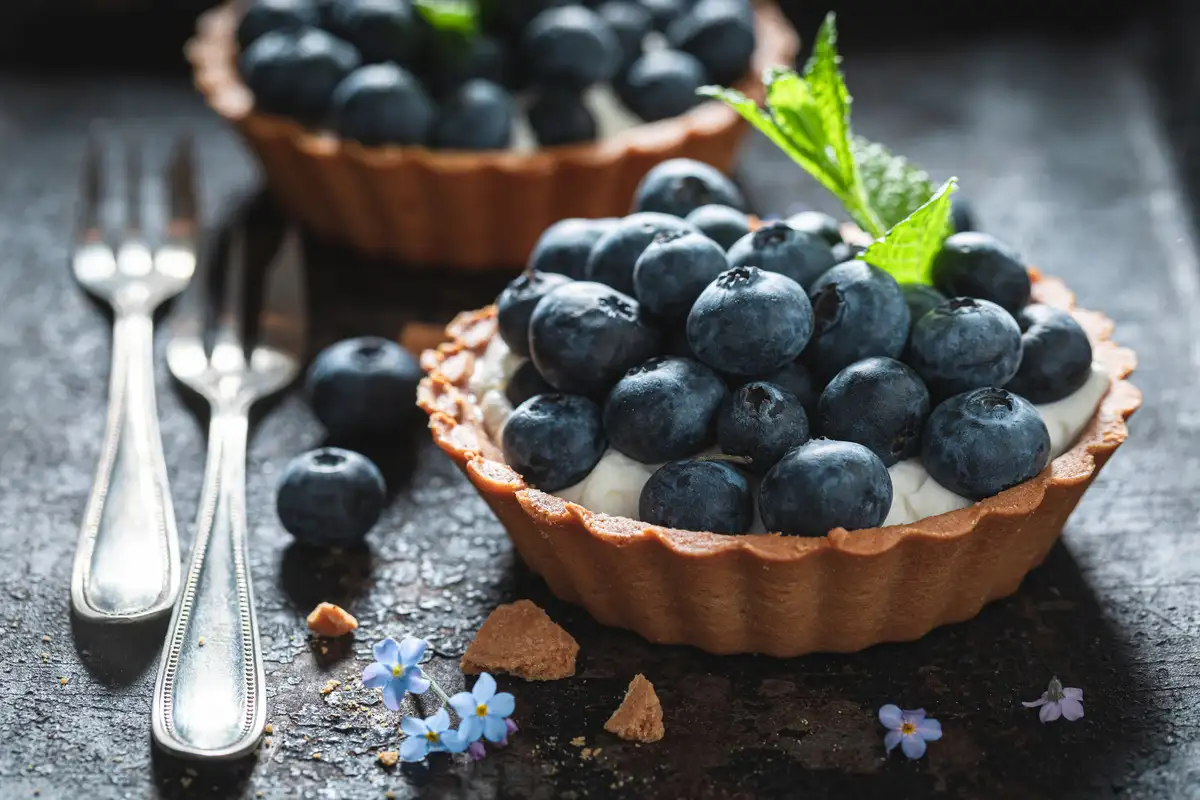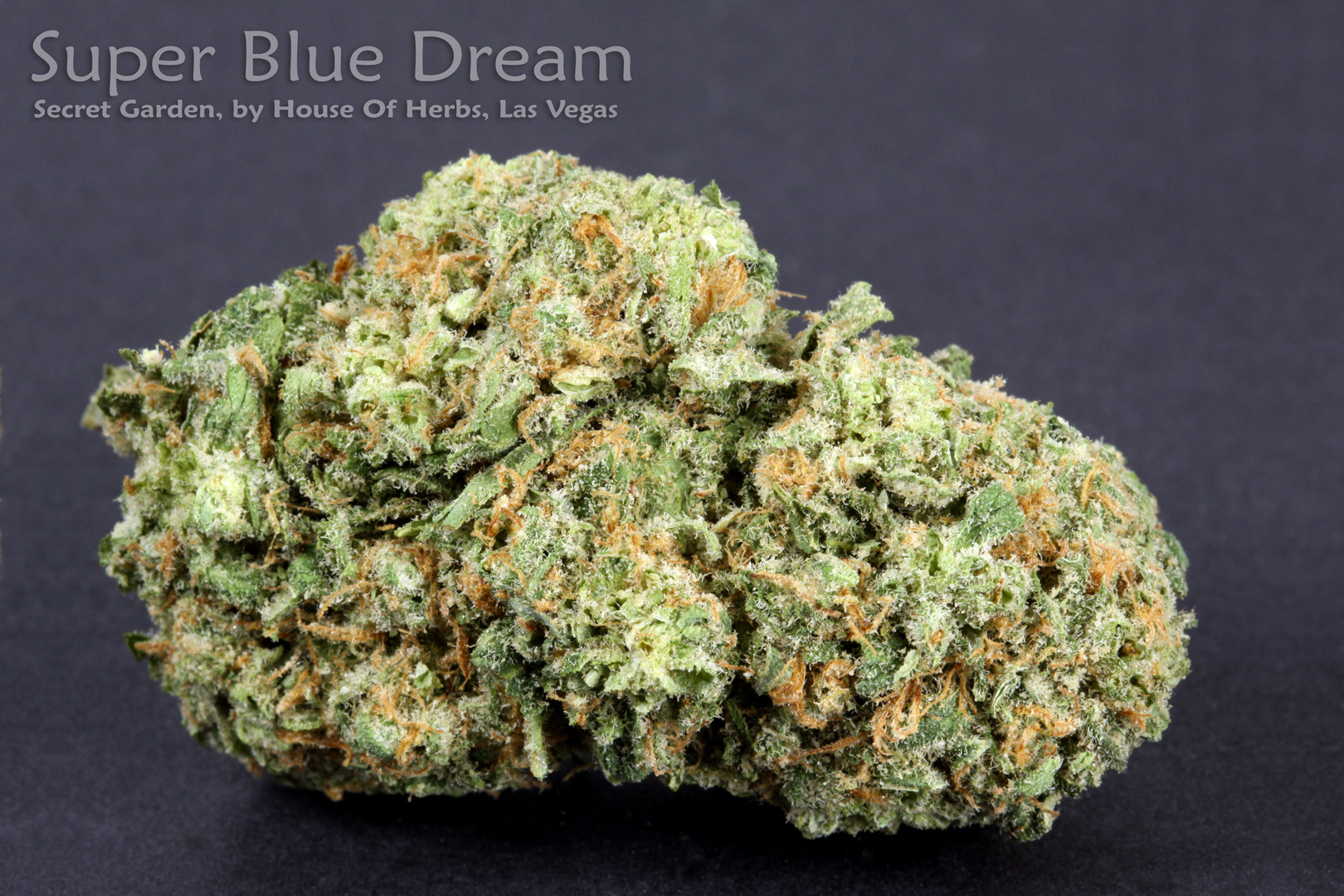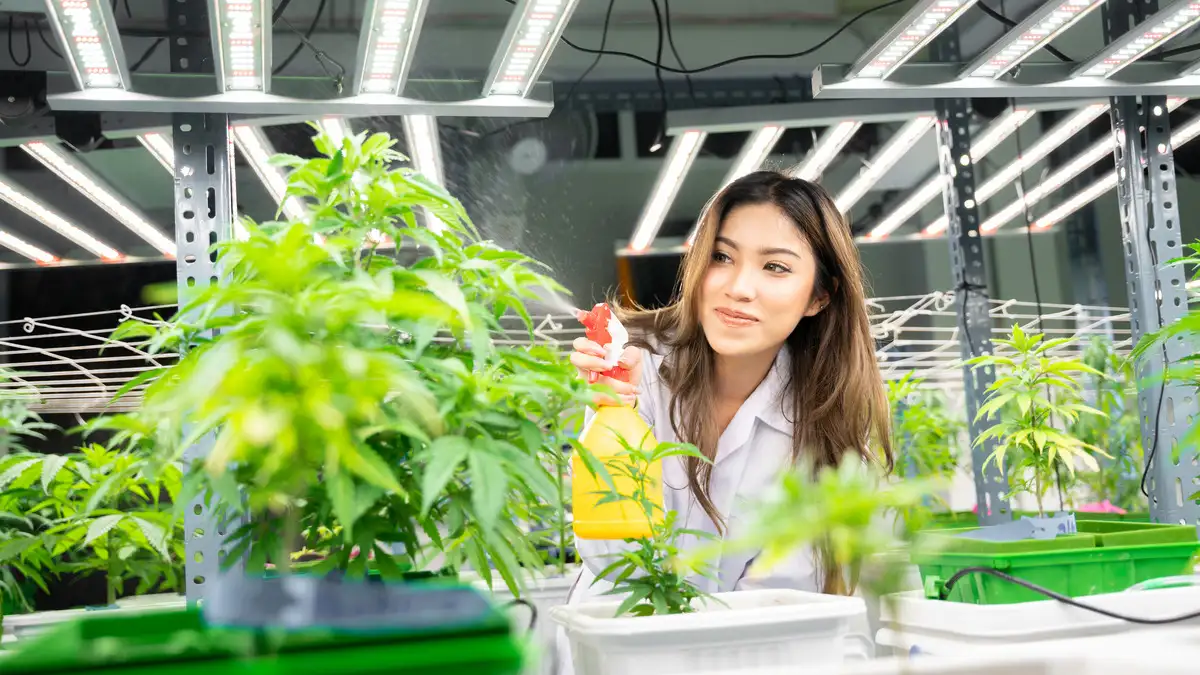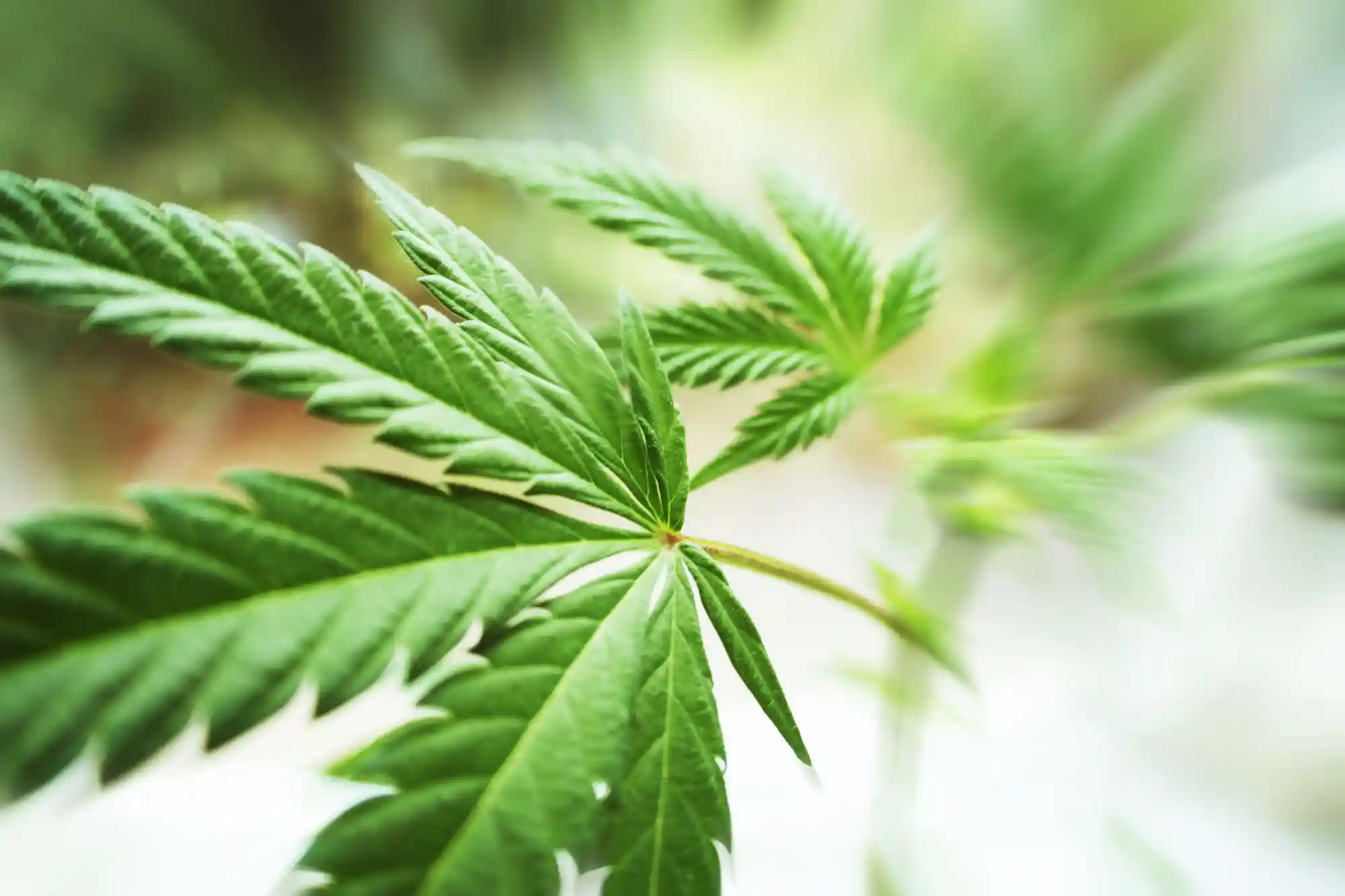As the cannabis industry continues to expand, so does the variety of strains available to consumers. From classic favorites to unique hybrids, there seems to be a cannabis strain to suit every preference. One particular group of strains that has gained attention in recent years is the blue cannabis strains. But are these strains actually blue in color?
In this blog post, we will delve into the world of blue cannabis strains and explore the truth behind their name. We will explore the origins of these strains, popular varieties, and their effects and uses. But most importantly, we will answer the burning question: are blue cannabis strains really blue in color?
To understand the color spectrum of cannabis, we must first understand the science behind it. Cannabis plants contain a variety of pigments that contribute to their overall color. One group of pigments, known as anthocyanins, are responsible for producing vibrant shades of blue, purple, and red in certain plant species. These pigments are also found in blue cannabis strains, giving them their distinct coloration.
However, the color of blue cannabis strains is not solely determined by the presence of anthocyanins. Other factors such as temperature, pH levels, and nutrient levels can also affect the intensity of the blue hue. By understanding these factors, growers can manipulate the growing conditions to maximize the blue color in their plants.
But while blue cannabis strains do contain these pigments, they may not always appear blue to the naked eye. Perception plays a significant role in how we interpret color, and lighting conditions can greatly influence our perception of the blue color in cannabis plants. Depending on the lighting conditions, blue strains may appear more green or purple than blue.
For those interested in cultivating blue cannabis strains, we will also provide tips on the best growing conditions and common challenges associated with these strains. Whether you are a seasoned grower or a curious enthusiast, this blog post will equip you with the knowledge you need to understand and appreciate the fascinating world of blue cannabis strains.
So, join us as we dive into the world of blue cannabis strains and uncover the truth about their color. Are they really blue, or is it just a clever name? Let’s find out together!
Understanding the Color Spectrum of Cannabis
Cannabis plants exhibit a wide range of colors, from vibrant greens to deep purples and blues. To understand why blue cannabis strains exist, it is essential to delve into the color spectrum of cannabis.
- Pigments in Cannabis
Cannabis plants contain various pigments that contribute to their coloration. The primary pigments found in cannabis are chlorophyll, carotenoids, and anthocyanins.
- Chlorophyll: This green pigment is responsible for the plant’s overall green color. It plays a crucial role in photosynthesis, the process by which plants convert light energy into chemical energy.
- Carotenoids: These pigments produce colors ranging from yellow to orange. They work in conjunction with chlorophyll, helping to capture additional light energy for photosynthesis.
- Anthocyanins: These pigments are responsible for the vibrant blues, purples, and reds seen in certain plant species, including blue cannabis strains. Anthocyanins are water-soluble and are primarily found in the vacuoles of plant cells.
- Anthocyanins in Cannabis
Anthocyanins are a class of flavonoids that act as natural pigments. They are prevalent in many fruits, flowers, and vegetables, contributing to their vibrant hues. In cannabis, anthocyanins are responsible for the blue coloration observed in blue strains.
- Genetic Factors: The presence and concentration of anthocyanins in cannabis depend on genetic factors. Some strains are inherently more likely to produce higher levels of anthocyanins, resulting in a more pronounced blue color.
- Environmental Factors: While genetics play a significant role, environmental factors also influence the expression of anthocyanins in cannabis plants. Factors such as temperature, pH levels, and nutrient availability can impact the intensity of the blue hue.
- Temperature and Color Expression
Temperature plays a crucial role in determining the color expression of blue cannabis strains. Cooler temperatures, particularly during the flowering stage, can enhance the production of anthocyanins and intensify the blue coloration.
- Flavonoid Biosynthesis: Lower temperatures stimulate the biosynthesis of flavonoids, including anthocyanins, in cannabis plants. This leads to an increase in the production of these pigments and a more pronounced blue color.
- Temperature Thresholds: However, it’s important to note that extreme cold temperatures can also have adverse effects on plant health and overall growth. Finding the optimal temperature range is crucial for achieving the desired blue color without compromising plant vitality.
- pH Levels and Nutrient Interactions
The pH level of the growing medium and the availability of nutrients can impact the expression of anthocyanins in cannabis plants. Changes in pH levels and nutrient imbalances can alter the color spectrum, affecting the intensity of the blue hue.
- Acidic Conditions: Acidic pH levels generally favor the expression of anthocyanins. Lowering the pH of the growing medium can enhance the blue coloration of cannabis plants. However, extreme acidity can harm the plants, so it’s important to maintain a balanced pH range.
- Nutrient Deficiencies and Excesses: Imbalances in nutrient levels, particularly nitrogen, phosphorus, and potassium, can affect the synthesis and expression of anthocyanins. Proper nutrient management is essential to ensure healthy growth and optimal color development.
Understanding the color spectrum of cannabis, particularly the role of pigments such as anthocyanins, provides a foundation for comprehending the existence and potential color variations of blue cannabis strains. By exploring the genetic and environmental factors influencing color expression, we can gain insight into the fascinating world of blue cannabis strains.
What Are Blue Cannabis Strains?
Blue cannabis strains are a unique category of cannabis varieties that exhibit a distinct blue coloration in their leaves, buds, or overall appearance. These strains have gained popularity among cannabis enthusiasts for their striking visual appeal and potential therapeutic properties. In this section, we will explore the origins of blue cannabis strains, highlight popular varieties, and discuss their effects and uses.
- Origins of Blue Cannabis Strains
Blue cannabis strains have a fascinating lineage, often tracing back to specific genetic crosses and breeding programs. Breeders selectively cultivate these strains to enhance desirable characteristics, including the blue color trait.
- Landrace Strains: Some blue cannabis strains can be traced back to landrace strains, which are indigenous varieties that have adapted to specific geographical regions. Over time, landrace strains may have developed unique traits, including the blue coloration.
- Hybridization and Genetic Manipulation: Breeders often cross different cannabis strains to create hybrids with specific traits. By selecting strains with natural or induced blue coloration and incorporating them into breeding programs, breeders can develop new blue cannabis strains.
- Popular Varieties of Blue Cannabis Strains
Blue cannabis strains come in a variety of flavors, aromas, and effects. Here are some popular varieties that have captured the attention of cannabis enthusiasts:
- Blue Dream: This sativa-dominant hybrid is known for its uplifting and euphoric effects. It combines the sweet berry flavors of Blueberry with the cerebral stimulation of Haze strains.
- Blueberry: A classic indica-dominant strain, Blueberry offers a relaxing and calming experience. It is renowned for its delicious blueberry aroma and sweet flavor profile.
- Blue Cheese: This unique hybrid combines the pungent and savory aroma of Cheese strains with the blueberry sweetness. Blue Cheese provides a balanced blend of relaxation and euphoria.
- Blue Widow: A cross between Blueberry and White Widow, this hybrid strain offers a combination of uplifting effects and physical relaxation. It is known for its resinous buds and fruity aroma.
- Blue Gelato 41: This potent hybrid is a cross between Blueberry, Thin Mint Girl Scout Cookies, and Sunset Sherbet. It boasts a sweet and fruity flavor profile and delivers a well-balanced high.
- Effects and Uses of Blue Cannabis Strains
Blue cannabis strains, like other cannabis varieties, can produce a range of effects that may vary depending on the individual and dosage. Some common effects associated with blue strains include:
- Relaxation and Stress Relief: Blue cannabis strains often provide a calming and soothing experience, making them popular choices for relaxation and stress relief.
- Pain Management: Many users find that blue strains offer effective pain relief, particularly for conditions such as chronic pain, inflammation, and muscle spasms.
- Euphoria and Mood Enhancement: Some blue strains have uplifting and euphoric effects, promoting a positive mood and a sense of happiness.
- Creativity and Focus: Certain blue strains are known to enhance creativity and focus, making them suitable for artistic endeavors or tasks that require mental clarity.
Blue cannabis strains can be consumed in various forms, including smoking, vaporizing, or incorporating them into edibles and topicals. The specific uses and effects of blue strains may vary, so it’s important to consider individual preferences and desired outcomes when choosing a strain.
In conclusion, blue cannabis strains offer a visually captivating experience and a range of effects that cater to different needs and preferences. Whether you’re seeking relaxation, pain relief, or a boost in creativity, these strains provide an intriguing option to explore within the vast world of cannabis varieties.
Why Are They Called ‘Blue’ Strains?
Blue cannabis strains derive their name from the distinctive blue coloration that can be observed in their leaves, buds, or overall appearance. However, the blue color is not always a straightforward reflection of the strain’s true color. In this section, we will explore the factors that contribute to the blue color in cannabis strains and shed light on why they are called ‘blue’ strains.
- The Role of Anthocyanins
The primary reason behind the blue color in cannabis strains can be attributed to the presence of anthocyanins, a class of pigments responsible for producing vibrant blues, purples, and reds in certain plant species. Anthocyanins are water-soluble pigments that belong to the flavonoid group.
- Anthocyanin Accumulation: Blue cannabis strains contain higher levels of anthocyanins compared to other strains. These pigments accumulate in the plant tissues, leading to the blue coloration.
- Genetics and Anthocyanin Production: The genetics of a particular strain play a significant role in determining the concentration and expression of anthocyanins. Some strains are genetically predisposed to produce higher levels of these pigments, resulting in a more pronounced blue color.
- Impact of Temperature on Color
Temperature is a crucial factor that can influence the expression of the blue color in cannabis strains. The relationship between temperature and color is complex, and different temperature ranges can lead to variations in color intensity.
- Cooler Temperatures: Lower temperatures during the flowering stage of cannabis plants can enhance the production of anthocyanins, leading to an intensified blue color. Cooler temperatures stimulate the biosynthesis of these pigments, resulting in a more vibrant hue.
- Temperature Fluctuations: Fluctuations in temperature, particularly during the night cycle, can also contribute to the development of blue coloration. Sharp drops in temperature can trigger the production of anthocyanins, enhancing the blue hues in certain strains.
- The Influence of pH and Nutrient Levels
pH levels and nutrient interactions within the growing medium can impact the expression of anthocyanins and subsequently affect the color of cannabis strains.
- pH and Anthocyanin Stability: Acidic pH levels generally favor the stability and expression of anthocyanins. Lowering the pH of the growing medium can enhance the blue coloration of cannabis plants. However, extreme acidity can harm the plants, so it’s crucial to maintain a balanced pH range.
- Nutrient Deficiencies and Excesses: Imbalances in nutrient levels, particularly nitrogen, phosphorus, and potassium, can impact the synthesis and expression of anthocyanins. Proper nutrient management is essential to ensure healthy growth and optimal color development.
- Perception of Blue in Cannabis Plants
While blue cannabis strains do contain anthocyanins and exhibit blue coloration, the perception of blue can vary depending on individual observation and lighting conditions.
- Lighting Conditions: The way light interacts with pigments in plants can influence the perception of color. Under certain lighting conditions, blue strains may appear more green or purple than blue. Factors such as intensity, spectrum, and angle of light can affect color perception.
- Plant Structure: The way the blue color is distributed throughout the plant’s tissues can also impact its visibility. Some strains may display blue hues more prominently in specific areas, such as the leaves or buds, while others may exhibit a more overall blue appearance.
In summary, blue cannabis strains derive their name from the presence of anthocyanins, which contribute to their distinct blue coloration. Factors such as genetics, temperature, pH levels, and nutrient interactions play significant roles in determining the intensity and visibility of the blue color. However, it is important to note that the perception of blue can vary depending on lighting conditions and individual observation.
Are Blue Cannabis Strains Really Blue?
Despite their name, blue cannabis strains may not always appear blue to the naked eye. The perception of color can be influenced by various factors, including lighting conditions, genetics, and pigmentation distribution. In this section, we will explore the factors that contribute to the perceived blue color in cannabis strains and discuss why some strains may appear more blue than others.
- The Perception of Blue in Cannabis Plants
Color perception can be subjective, and what one person sees as blue, another may perceive differently. The human eye’s ability to perceive colors is influenced by several factors, including individual variation and lighting conditions.
- Individual Variation: Each person may have a slightly different perception of color due to variations in their visual system. Factors such as genetics, age, and overall eye health can affect color perception.
- Lighting Conditions: Lighting plays a crucial role in how we perceive color. Different light sources, intensities, and spectrums can alter the appearance of colors. Blue cannabis strains may appear more or less blue depending on the lighting conditions under which they are observed.
- Why Some Strains Appear More Blue Than Others
The blue coloration in cannabis strains can vary, and some strains may appear more blue than others. This can be attributed to several factors, including genetics, pigmentation distribution, and environmental influences.
- Genetics and Anthocyanin Levels: The genetics of a strain play a significant role in determining the concentration of anthocyanins and the intensity of the blue color. Some strains may naturally produce higher levels of anthocyanins, resulting in a more pronounced blue appearance.
- Pigmentation Distribution: The distribution of pigments within the plant’s tissues can impact the visibility of the blue color. Some strains may exhibit a more even distribution of anthocyanins throughout the leaves and buds, leading to a more prominent blue coloration.
- Environmental Factors: Environmental conditions, such as temperature, pH levels, and nutrient availability, can influence the expression of pigments in cannabis plants. Optimal conditions that promote anthocyanin production can enhance the blue coloration, while suboptimal conditions may result in a less pronounced blue hue.
- The Role of Lighting Conditions in Color Perception
Lighting conditions can significantly influence the perceived color of cannabis strains, including blue strains. The interaction between light and pigments within the plant can alter the appearance of colors.
- Spectrum of Light: Different light spectrums can affect how colors are perceived. Blue cannabis strains may appear more blue under certain light sources, such as LED lights with a higher blue spectrum.
- Intensity of Light: The intensity of light can also impact color perception. Higher light intensities may enhance the visibility of blue hues, while lower intensities may make the blue color appear less vibrant.
- Angle of Light: The angle at which light hits the plant can affect how the color is perceived. Changes in lighting angles can result in variations in color appearance, making the blue color more or less prominent.
In conclusion, while blue cannabis strains do contain pigments, such as anthocyanins, that contribute to their blue coloration, the perception of blue can vary depending on individual observation and lighting conditions. Factors such as genetics, pigmentation distribution, and environmental influences can also affect the intensity and visibility of the blue color. It is important to consider these factors when appreciating and evaluating the blue color in cannabis strains.
Cultivation and Care for Blue Cannabis Strains
Cultivating and caring for blue cannabis strains require specific knowledge and considerations to ensure optimal growth and color development. In this section, we will explore the best growing conditions for blue strains, common challenges that may arise, and provide tips for maximizing the blue hue in these unique cannabis varieties.
- Best Growing Conditions for Blue Strains
Blue cannabis strains thrive under certain environmental conditions that promote the expression of anthocyanins and enhance the blue coloration. Here are some key considerations for cultivating blue strains:
- Temperature: Maintaining a slightly cooler temperature range during the flowering stage can help intensify the blue color. Aim for temperatures between 65-80°F (18-27°C) during the day and slightly lower temperatures at night.
- Lighting: Consider using LED grow lights with a higher blue spectrum to enhance the blue coloration. Ensure proper light intensity and duration according to the strain’s specific requirements.
- pH and Nutrient Levels: Monitor and maintain a balanced pH level in the growing medium, typically around 6.0-6.5. Adequate nutrient levels, particularly phosphorus and potassium, are essential for healthy growth and color development.
- Air Circulation and Humidity: Ensure proper air circulation and ventilation in the growing area to prevent mold and mildew growth. Maintain relative humidity levels between 40-50% during the flowering stage.
- Common Challenges in Growing Blue Cannabis Strains
Cultivating blue cannabis strains may present some unique challenges that growers should be aware of. These challenges include:
- Genetic Stability: Some strains may exhibit genetic instability, leading to variations in color expression. It is important to source seeds or clones from reputable breeders to ensure genetic consistency.
- Nutrient Deficiencies and Excesses: Imbalances in nutrient levels can impact color development and overall plant health. Monitor nutrient levels closely and address any deficiencies or excesses promptly.
- Lighting Challenges: The perception of the blue color can be influenced by lighting conditions. Experimenting with different lighting setups and observing the plants under various light spectrums can help maximize the blue coloration.
- Temperature Management: Balancing the temperature range can be challenging, especially in different climates. Using temperature control measures such as fans, ventilation, and temperature-monitoring devices can help maintain the desired temperature range.
- Tips for Maximizing the Blue Hue
To maximize the blue hue in cannabis strains, consider the following tips:
- Choose Blue-Enhancing Strains: Opt for strains known to possess a strong blue coloration and genetic stability. Research breeders and select strains with a reputation for vibrant blue phenotypes.
- Maintain Optimal Growing Conditions: Ensure a consistent and controlled environment with proper temperature, lighting, humidity, and nutrient levels. Monitor the pH of the growing medium regularly to maintain a balanced environment for optimal color development.
- Selective Breeding: If allowed and experienced in breeding, consider selecting plants with the most desirable blue traits for further breeding and seed production to enhance the blue coloration in future generations.
- Harvest at the Right Time: Timing is crucial when harvesting blue cannabis strains. Pay attention to the color of the trichomes and follow the strain-specific guidelines for the ideal harvest window to achieve the desired color and potency.
In conclusion, cultivating blue cannabis strains requires careful attention to specific growing conditions and challenges. By providing optimal conditions, addressing common issues, and implementing strategies to maximize the blue hue, growers can achieve visually stunning and vibrant blue cannabis strains. Remember to experiment, learn from experience, and adapt techniques to suit the specific strain and environmental factors for the best results.










